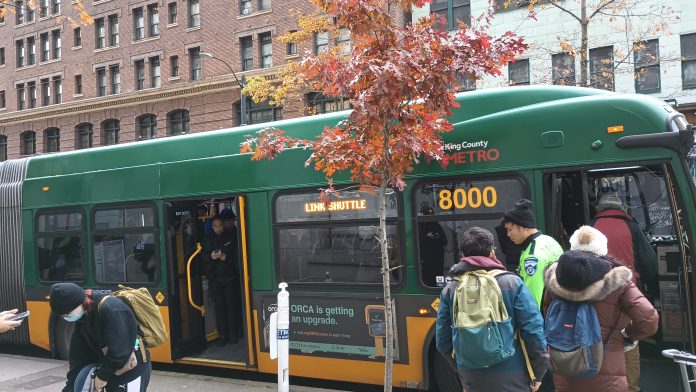
Since Friday morning, Link light rail has been shut down between Capitol Hill and SoDo for maintenance work, and the replacement shuttle service hasn’t always been running smoothly. Riders have reported crowding and confusion, and Sound Transit has pledged to step up rider alerts and communication efforts.
Sound Transit is using a mix of King County Metro buses and privately contracted Bellair buses, and since the latter aren’t well marked, some riders haven’t realized they were available and intended as replacement buses. Sound Transit CEO Julie Timm took a shuttle test ride on Friday evening from International District/Chinatown (CID) Station and admitted that the private shuttles could be overlooked.
“Was at CID Station to catch the Northgate Shuttle and to check out [operations] in real time and on site,” Timm said in a tweet. “Bus was too packed to get on. Had to wait for a couple. The supporting Bel Air charter buses are hard to identify as Link. If you need to ride, consider @KingCountyMetro this weekend!”
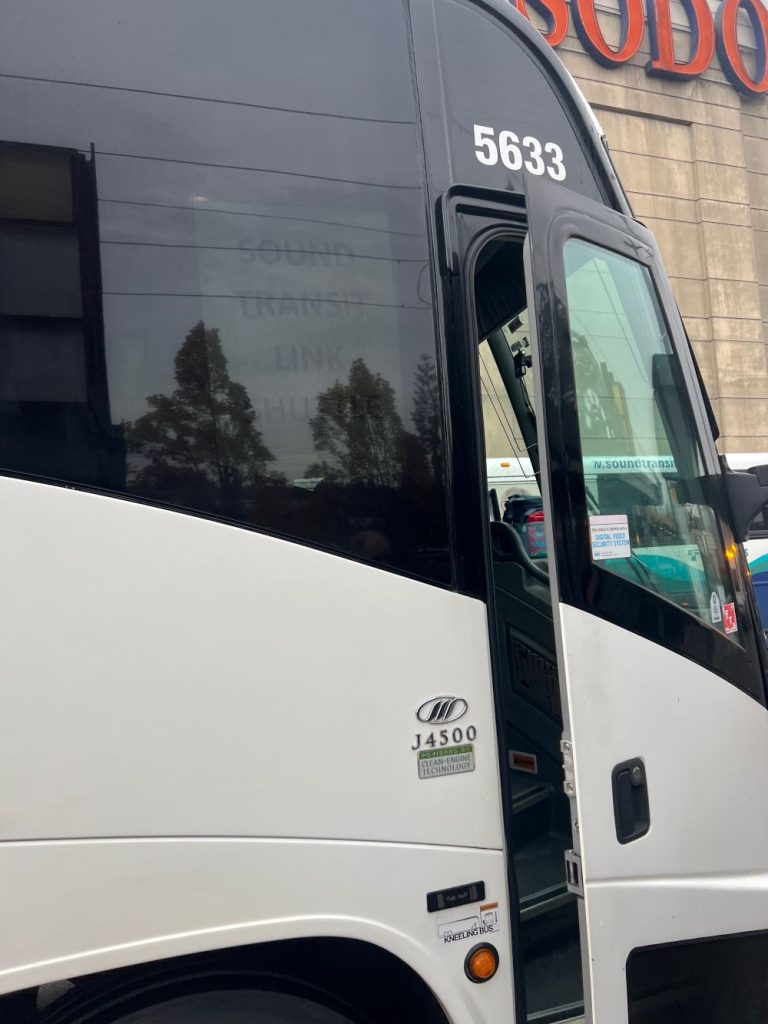
Sound Transit spokesperson Rachelle Cunningham said better signage on buses is on the way, but she pointed to the regionwide (and nationwide) bus driver shortage as limiting what the agency could do to ramp up replacement shuttle frequency.
“We are increasing communications, and monitoring for adjustments we can make, including improving signs on buses and adding announcements,” Cunningham said in an email. “But due to the operator shortage, we are not able to add any more buses.”
As The Urbanist covered Thursday, the disruption has been caused by Sound Transit’s need to conduct maintenance work in the tunnel downtown to replace overhead catenary wire system and continue work to prepare for the opening of East Link, which is expected in 2024 following construction delays. At that point, both the 1 Line and 2 Line (East Link) will operate in the Downtown Seattle Transit Tunnel.
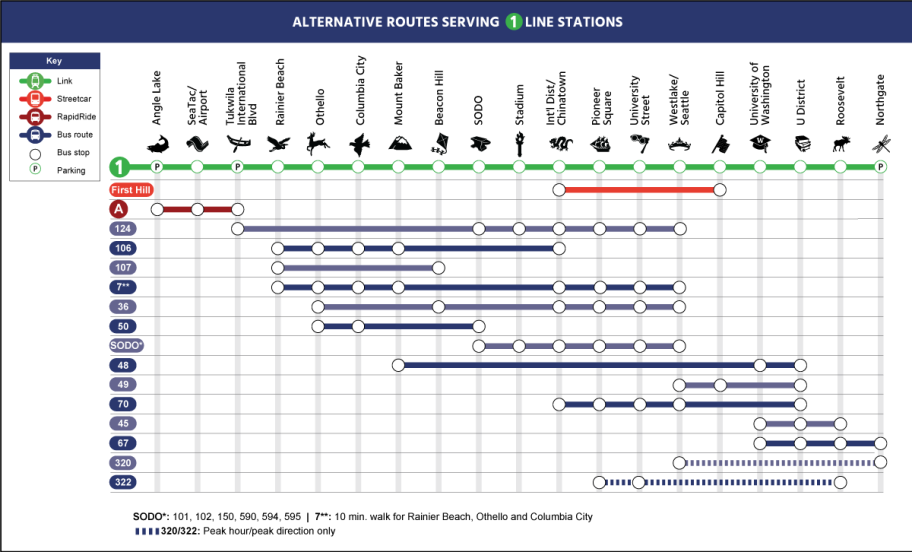
While most local media outlets mentioned the the closure, as did the agency on its social media and in emails to those signed up for rider alerts, not all riders had caught the news or considered switching their transit routine to Metro bus service instead, which contributed to the crowding. Sound Transit does maintain a page showing transit detour options for each station. The agency’s press release on the Friday-to-Monday closure went out midday Wednesday, which meant riders mostly had a day and a half to see an alert about it. A Sound Transit Platform blogpost did go out on November 1, noting the November 11 to 13 closure, but didn’t include many details.
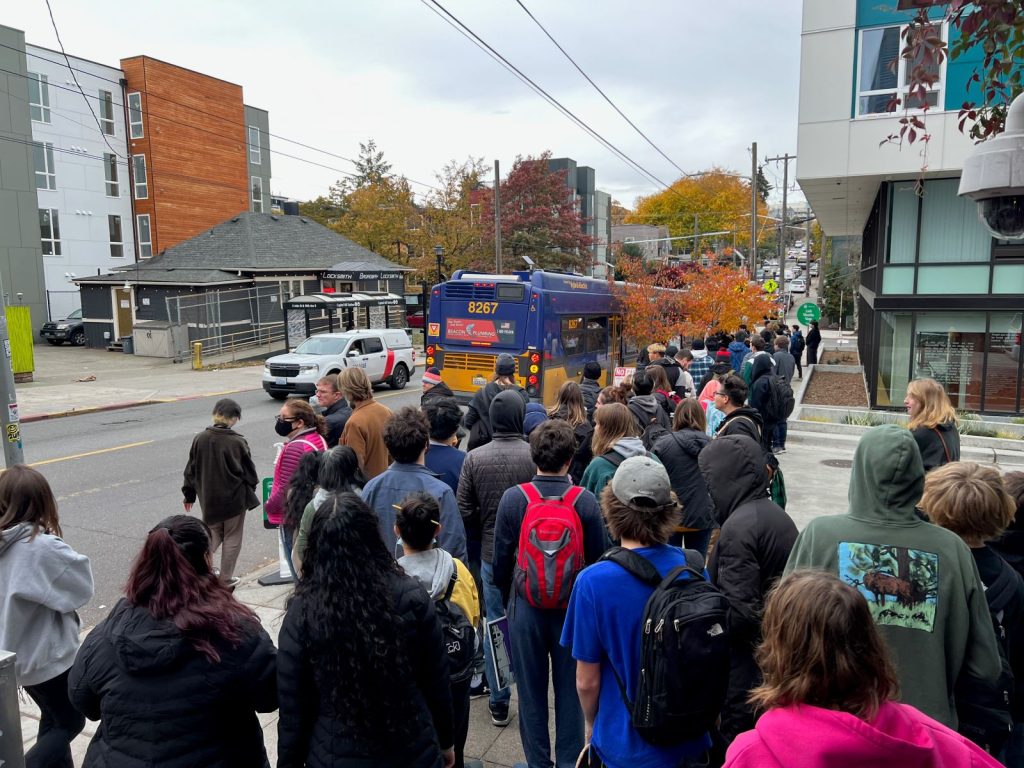
“Link shuttle is crush loaded at Pioneer Square,” The Urbanist’s transportation reporter Ryan Packer tweeted shortly after 11am Friday. “The bus sat at the stop for several minutes while the driver tried to redistribute passengers, delaying things even more. Doesn’t look like things are going great!” Packer added that three agency vehicles were parked in the sidewalk outside the south entrance to Pioneer Square, which made signs harder to see.
“It’s critical that the impacts to riders are minimized as much as possible,” the transit advocacy organization Seattle Subway tweeted Saturday morning. “That means a frequent/legible bus bridge. Sounds like this weekend was a failure on that front.”
Sound Transit CEO Timm admitted this morning that the communication efforts could have been more robust, but noted that getting more replacement bus service had been a priority for her team.
“This was actually (IMO) [in my opinion] why the team was late in messaging,” Timm said in a tweet replying to Seattle Subway. “They were working very hard to get more frequency on the Shuttle service right up to the last minute. I think we waited too long in hopes of better frequency.”
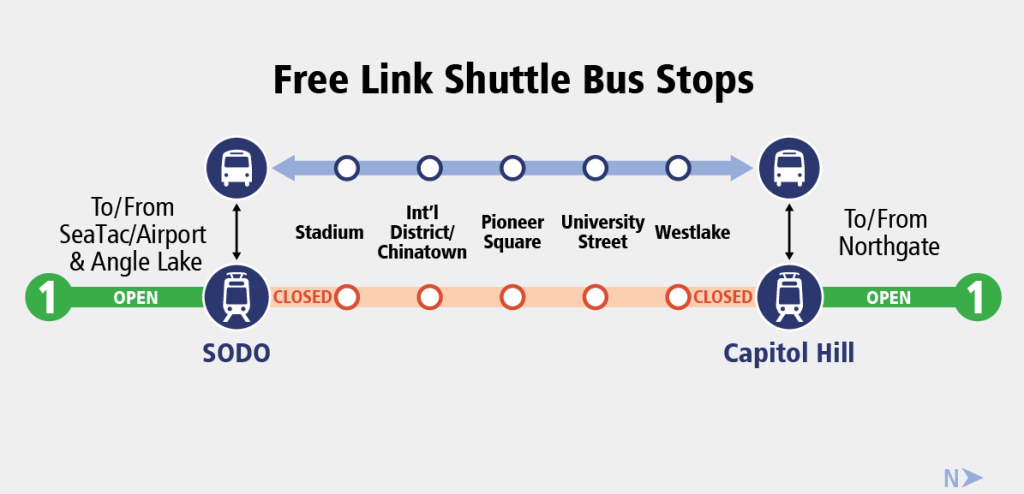
For the replacement bus bridge, Cunningham said Sound Transit is running eight buses per hour, two at a time, at 15-minute intervals as planned. On the ground, Packer and others have reported shuttles are coming more frequently than every 15 minutes. However, the two-at-a-time setup has sometimes generated a bus bunching effect with crowds gathering, crush-loading onto the first bus and then then following run is sometimes fairly empty. Another issue reducing reliability is that route lacks bus only lanes outside of Third Avenue, which means shuttle buses do get stuck in traffic.
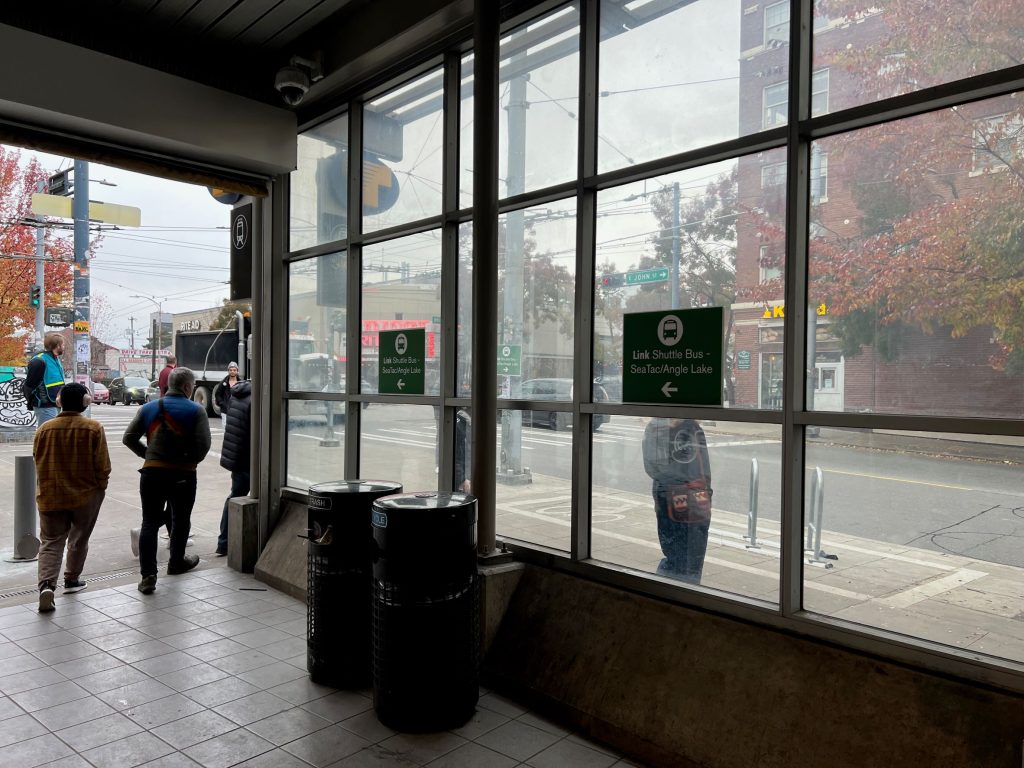
While Packer didn’t see anyone directing traffic at some of the stops, Sound Transit said agency ambassadors should be on site at most of the stations during daytime hours. Nocturnally, riders will have to navigate the transit detour without an ambassador, however.
“Ambassadors are at most stations between 8am and 6pm to direct passengers,” Cunningham said. “We understand that there were some stations in the evening that did not have ambassadors at them.”
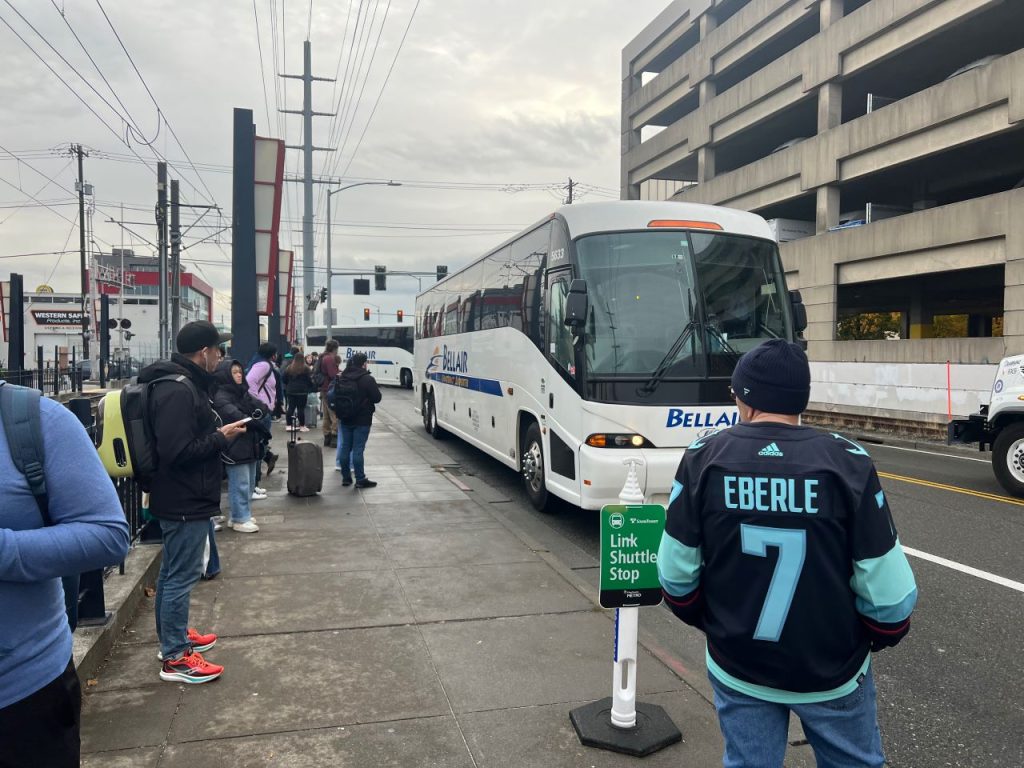
At SoDo Station, which is particularly crowded since riders are forced to disembark northbound Link trains and switch to the shuttle bus, rider Daniel Heppner noted Metro buses like Route 101 or 150 could have provided a good alternative for throngs of passengers waiting. Unfortunately, Heppner said ambassadors on Friday afternoon weren’t telling passengers about the Metro alternatives and generally reported confusion at the stops. It’s possible the crowds were making it hard for the ambassadors to communicate with everyone. Cunningham said ambassadors are directed to tell passengers to try an alternate Metro bus service that may come quicker than a shuttle.
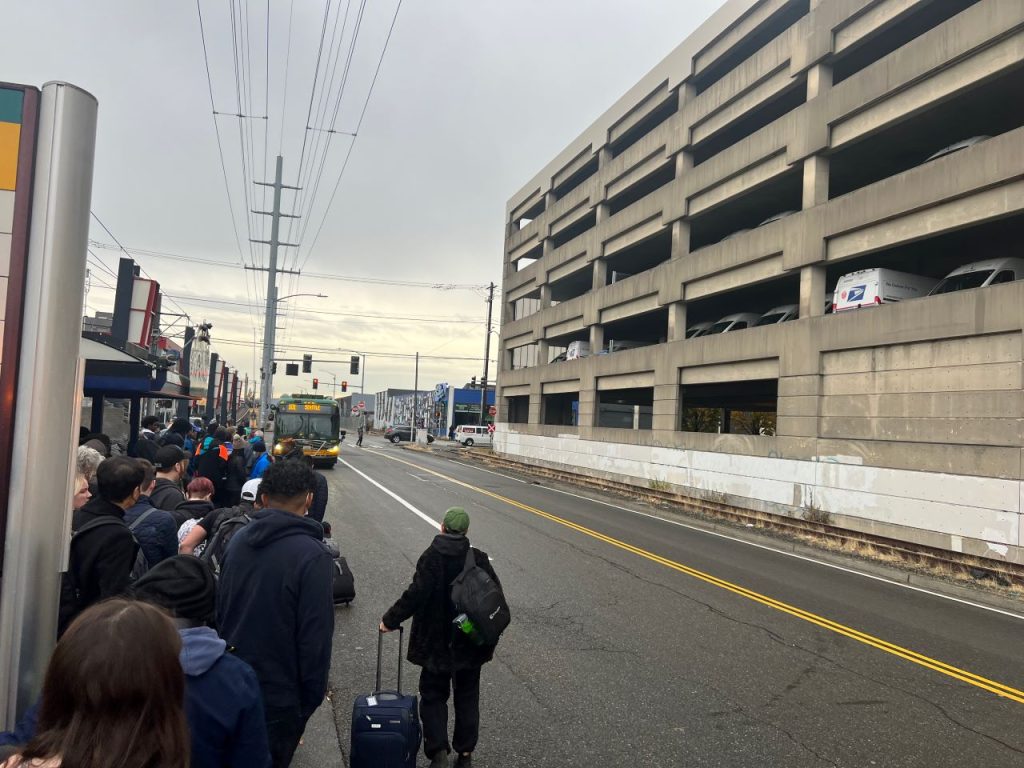
Ambassadors had access to two bullhorns at Capitol Hill Station, Cunningham said, but bullhorns weren’t available at every stop. Most of Sound Transit’s communication efforts are online. “Alerts are distributed to subscribers by email and text, through the ST alerts, Twitter account, and posted on the website,” she added. The stations’ public address (PA) sound systems didn’t seem to be fully enlisted to provide details with regular announcements.
Bus drivers are supposed to be announcing stops for passengers so that they don’t miss their stop, but Heppner reported that didn’t happen on the Bellair shuttle he rode Friday afternoon and the driver missed the Pioneer Station stop on the run. Heppner also reported one passenger with a roller bag was denied entry to the Bellair bus and told to wait for Metro. A Sound Transit spokesperson said that Bellair drivers should be accepting passengers with luggage and should be familiarized with the route. On Saturday, Metro buses have picked up more of the load according to our rider eye witnesses.
“The drivers know the route, but they are not as familiar with it as the Metro bus operators are,” Cunningham said. “They have been directed to make announcements, and should be doing so the rest of the weekend. I don’t know anything about luggage being denied and will check into it.”
All in all, it hasn’t been a smooth rollout of replacement service for Link during this weekend, but the agency does appear to be adjusting to try to meet the need and better communicate alternatives. Sound Transit’s new CEO riding the shuttle service herself and engaging with riders about it online was an important gesture that Urbanist staff can’t recall her predecessor Peter Rogoff making. It could portend a brighter future for the oft-forgotten rider experience and customer service aspect of Sound Transit’s mission.
The crowds at bus stops this weekend underscore the need to address the bus operator shortage that is hampering the ability of transit agencies to respond and bump up service. It also underscores the great importance Link light rail service has taken in moving people throughout our region and how much riders rely on the service.
This importance will only grows as the Link network grows. Light rail has rebounded much quicker from the pandemic than most transit services; Link nearly recovered it pre-pandemic average of 80,000 weekday boardings in September. The Link network is projected to reach 600,000 daily passengers in the 2040’s once the 116-mile network approved in Sound Transit 3 is built out. Hopefully, the agency is able to reduce disruptions in the future and respond more nimbly when they do need the occasional maintenance closure. Puget Sound residents are counting on them.
Ryan Packer contributed reporting to this article.
Correction: An earlier version of this article stated Heppner didn’t see ambassadors at SoDo, which is incorrect. He saw two ambassadors, but didn’t see them directing passengers to overlapping Metro bus service. We’ve also updated the article with additional information at 5:30pm.
Doug Trumm is publisher of The Urbanist. An Urbanist writer since 2015, he dreams of pedestrian streets, bus lanes, and a mass-timber building spree to end our housing crisis. He graduated from the Evans School of Public Policy and Governance at the University of Washington in 2019. He lives in Seattle's Fremont neighborhood and loves to explore the city by foot and by bike.

